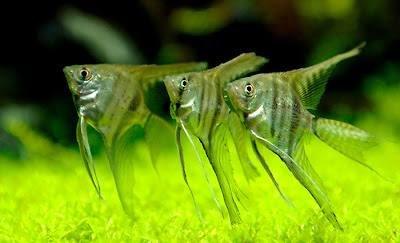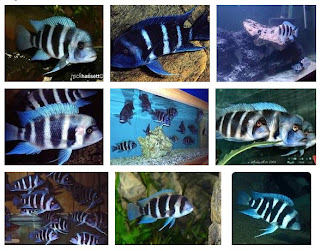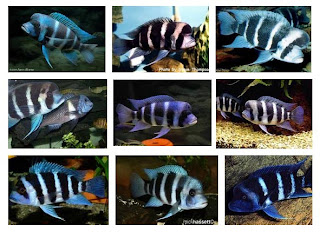
These following pictures below are the photo gallery of Maanvis fish (Pterophyllum scalare), which includes ornamental fish cichlid species with distinctive appearance, which is graceful, gentle, and beautiful.
If Discus fish got nickname as 'King of Freshwater Aquarium' then the Maanvis fish nickname was 'Queen of Freshwater Aquarium' or also said as 'Angelfish'.
From the results of interbreed made by hobbies or breeder, maanvis produced a variety of colors, like black and white (BW), black, tricolor, yellow, and albino. Currently, the famous maanvis fish species are yellow plain white with red eyes light up. Prices of this type are relatively expensive than other maanvis types.
Maanvis including the ornamental fish types which are easily to breeding because quite often lay eggs. Maanvis also quite tolerant with a variety of water conditions. So it is quite easy in care. But, to get best quality of maanvis fish, its required special attention because of the long tie of maanvis fish was frangible. Besides the fish skin is easily scratched, and the long fins on the maanvis fish is perishable, easily rotten or torn.
The damaged fins of maanvis can usually be repaired with a good care when the fish are immature, but when it occurs in adult maanvis fish, the such damages could not recover.













